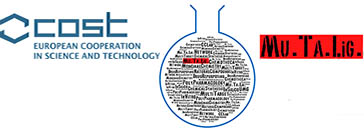
General information
| Name: ARVINTE |
| Surname: Adina |
| E-mail: adina.arvinte@icmpp.ro |
| Cell phone number with international prefix: +4 0721796476 |
| Country: Romania |
| Affiliation: “Petru Poni” Institute of Macromolecular Chemistry, Iasi, Romania |
| Gender: F x M □ |
| Year of the PhD title: 2009 |
| Personal web page: http://www.researchgate.net/profile/Adina_Arvinte |
| Previous COST participation: No x Yes □ |
List of 10 selected publications within last 5 years
| 1. A. Arvinte, F. Doroftei, M. Pinteala, “Comparative electrodeposition of Ni-Co nanoparticles on carbon materials and their efficiency in electrochemical oxidation of glucose” J Appl Electrochem 46, 2016, 425–439 |
| 2. I.-M. Simionca, A. Arvinte, M. Pinteala, “Crown ether-based structures for sensitive electrochemical detection”, High Performance Polymers 27(5), 2015, 669-675 |
| 3. M.-D. Damaceanu, H.-D. Gilsing, B. Schulz, A. Arvinte, M. Bruma, “An easily functionalizable oligo(oxyethylene)- and ester-substituted poly(3,4-propylenedioxy-thiophene) derivative exhibiting alkali metal ion response, RSC Advances 4, 2014, 52467–52475 |
| 4. N. Marangoci, S.S. Maier, R. Ardeleanu, A. Arvinte, A. Fifere, A.R. Petrovici, A. Nicolescu, V. Nastasa, M. Mares, S.A. Pasca, R.F. Moraru, M. Pinteala, A. Chiriac, “Low Toxicity β-Cyclodextrin-Caged 4,4′-Bipyridinium-bis(siloxane): Synthesis and Evaluation”, Chemical Research in Toxicology, 27(4), 2014, 546-557 |
| 5. F. Doroftei, T. Pinteala, A. Arvinte, “Enhanced stability of Prussian blue–Sol–gel composite for electrochemical detection of hydrogen peroxide” Microchimica Acta 181, 2014, 111–120 |
| 6. C. Racles, M. Silion, A. Arvinte, M. Iacob, M. Cazacu, “ Synthesis and Characterization of Poly(siloxane-azomethine) Iron(III) Coordination Compounds”, Designed Monomers and Polymers 16 (5), 2013, 425-435 |
| 7. I.-M. Simionca, A. Arvinte*, R. Ardeleanu, M. Pinteala, “Siloxane-crown ether polyamide based electrode for electrochemical determination of Lead(II) in aqueous solution”, Electroanalysis 24 (10), 2012, 1995 – 2004 |
| 8. A. Vlad, M. Cazacu, C. Turta, R.I. Tigoianu, A. Airinei, Adina Arvinte, “Telechelic or side-functionalized diorganosiloxanes with ferrocenylimine groups”, Synthetic Metals 161, 2012, 2659-2668. |
| 9. A. Arvinte, M. Mahosenaho, M. Pinteala, A.-M. Sesay, V. Virtanen, “Electrochemical oxidation of p-nitrophenol using graphene modified electrodes and a comparison to the performance of MWNT-based electrodes”, Microchimica Acta 174, 2011, 337-343 |
| 10. A. Arvinte, A.M. Sesay, V. Virtanen, “Carbohydrates electrocatalytic oxidation using CNT-NiCo-oxide modified electrodes”, Talanta 84, 2011, 180–186. |
Main skills and expertise (up to 5)
| 1. electrochemical and spectroelectrochemical study of novel nanomaterials / polymeric composites |
| 2. electrosynthesis of metal nanoparticles and polymers by electrodeposition and electropolymerization techniques |
| 3. construction of screen printed electrodes and their modification with chemical mediators or catalytic compounds |
| 4. development of sensors/biosensors for food analysis, for clinic analysis and for toxic compounds detection |
| 5. detection and quantification of different analytes from food samples |
Main equipment/facilities available in the participants’ lab (up to 5)
| 1. – Metrohm Autolab PGSTAT302N Potentiostat/Galvanostat |
| 2. – Axis Nova XPS device |
| 3. – LVEM5 Benchtop Electron Microscope (TEM, STEM, SEM, EDX) |
| 4. – AFM coupled with Raman confocal microscope |
| 5. – FT-IR Bruker Vertex 70 Spectrometer |
Short personal activity proposal for the COST Action CA15135 (max 1000 characters)
| “Petru Poni” Institute of Macromolecular Chemistry has established long-term development strategy in interdisciplinary research areas. The main research objectives are focused around the innovative biomedical smart nanosystems obtained by supramolecular self-assembly and self-organization concepts. Supramolecular chemistry is a powerful tool in constructing highly complex multi-functional chemical systems from molecular components held together by non-covalent intramolecular forces.
The main research directions are as follows: – Developing of conceptually new smart nanosystems to be used in diagnostics and/or targeted drug delivery systems – Elaboration of protocols for the full in vitro testing of the optimum systems for cellular experiments. Another area of interdisciplinary research consists in development of electrochemical platform for multi-analyte detection with high sensitivity and specificity with biomedical applications, especially involved in diagnostics. The concept of simultaneous detection of multiple analytes is based on handling different electrode surfaces architecture and configuration. |
Work Group preference: score from 1 (preferred) to 4 (not preferred)
| Work Group of the CA15135 COST Action | Score |
| WG1: Development of new chemical entities | 2 |
| WG2: Selection of biological targets and assessment of biological data | 1 |
| WG3: Development of chemical databases | 3 |
| WG4: Development of Computational methods for multiple ligand design and discovery | 3 |
